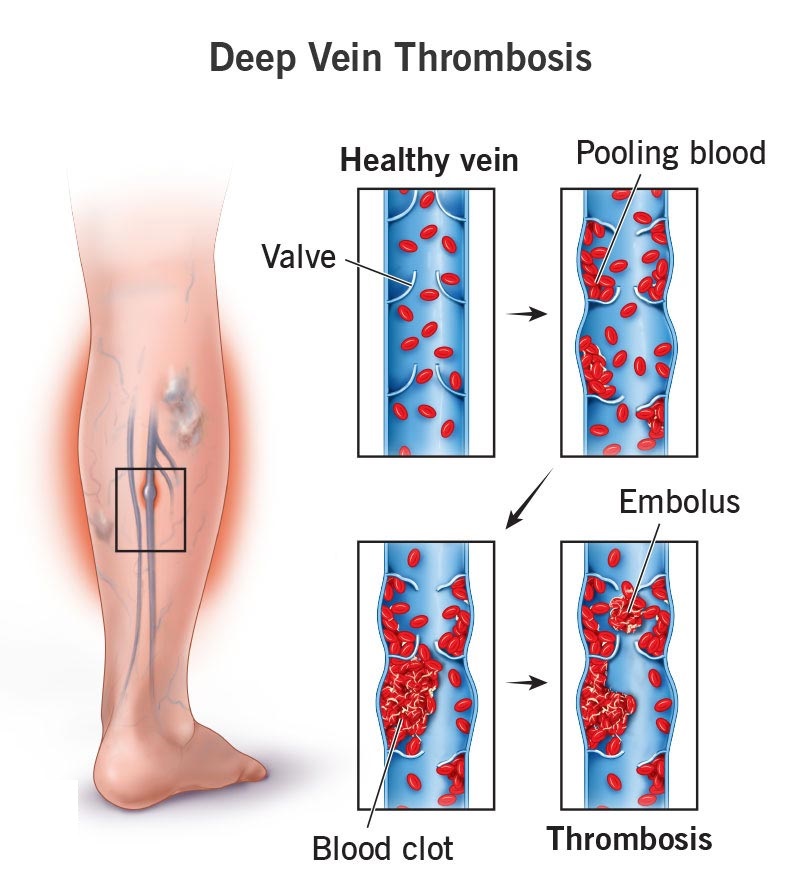Deep Vein Thrombosis (DVT)
- Home
- Vascular Treatment
- Deep Vein Thrombosis (DVT)

Deep Vein Thrombosis (DVT) is a condition where a blood clot forms in a deep vein, usually in the legs. This can cause pain, swelling, and serious complications if the clot travels to the lungs, leading to a pulmonary embolism. DVT requires prompt medical attention and treatment to prevent severe health issues.
Understanding Deep Vein Thrombosis (DVT)
DVT occurs when a blood clot, or thrombus, forms in a deep vein, often in the lower leg, thigh, or pelvis. Factors that increase the risk of DVT include prolonged immobility, surgery, injury, certain medications, and genetic predispositions. Symptoms of DVT include swelling, pain, redness, and warmth in the affected leg. If a clot breaks free and travels to the lungs, it can cause a life-threatening pulmonary embolism.
Managing Deep Vein Thrombosis (DVT)
Managing DVT involves anticoagulant medications to prevent further clotting, compression stockings to reduce swelling, and lifestyle changes to improve circulation. In severe cases, surgical interventions like thrombectomy or the insertion of a filter in the inferior vena cava may be necessary. Regular physical activity, hydration, and avoiding long periods of immobility are important preventive measures.
Vascular Surgeon in Vadodara (Rutvij Shah): For individuals with DVT, consulting a vascular surgeon in Vadodara, such as Rutvij Shah, is crucial. Vascular surgeons can provide comprehensive care, including accurate diagnosis, effective treatment plans, and interventions to prevent complications. Their expertise ensures optimal management of DVT and related vascular conditions.
In conclusion, Deep Vein Thrombosis (DVT) involves the formation of blood clots in deep veins, which can lead to serious complications. With appropriate medical treatment, lifestyle changes, and the expertise of a vascular surgeon in Vadodara, like Rutvij Shah, individuals can manage DVT effectively and reduce the risk of severe outcomes.
-
How common is Deep Vein Thrombosis (DVT)?
DVT is relatively common, affecting approximately 1 in 1,000 people annually. It can occur at any age but is more prevalent in older adults.
-
What are the complications of Deep Vein Thrombosis (DVT)?
The primary complication is a pulmonary embolism, which occurs if a clot travels to the lungs. Post-thrombotic syndrome, characterized by chronic pain and swelling, is another potential complication.
-
What is the most common cause of Deep Vein Thrombosis (DVT)?
The most common causes include prolonged immobility, surgery, trauma, certain medical conditions, and genetic predispositions that affect blood clotting.
-
When should I see my healthcare provider?
See your healthcare provider if you experience unexplained leg pain, swelling, redness, or warmth. Early detection and treatment are essential to prevent complications.
-
When should I go to the ER?
Seek immediate medical attention if you have symptoms of a pulmonary embolism, such as sudden shortness of breath, chest pain, or coughing up blood. These are medical emergencies requiring urgent care.
